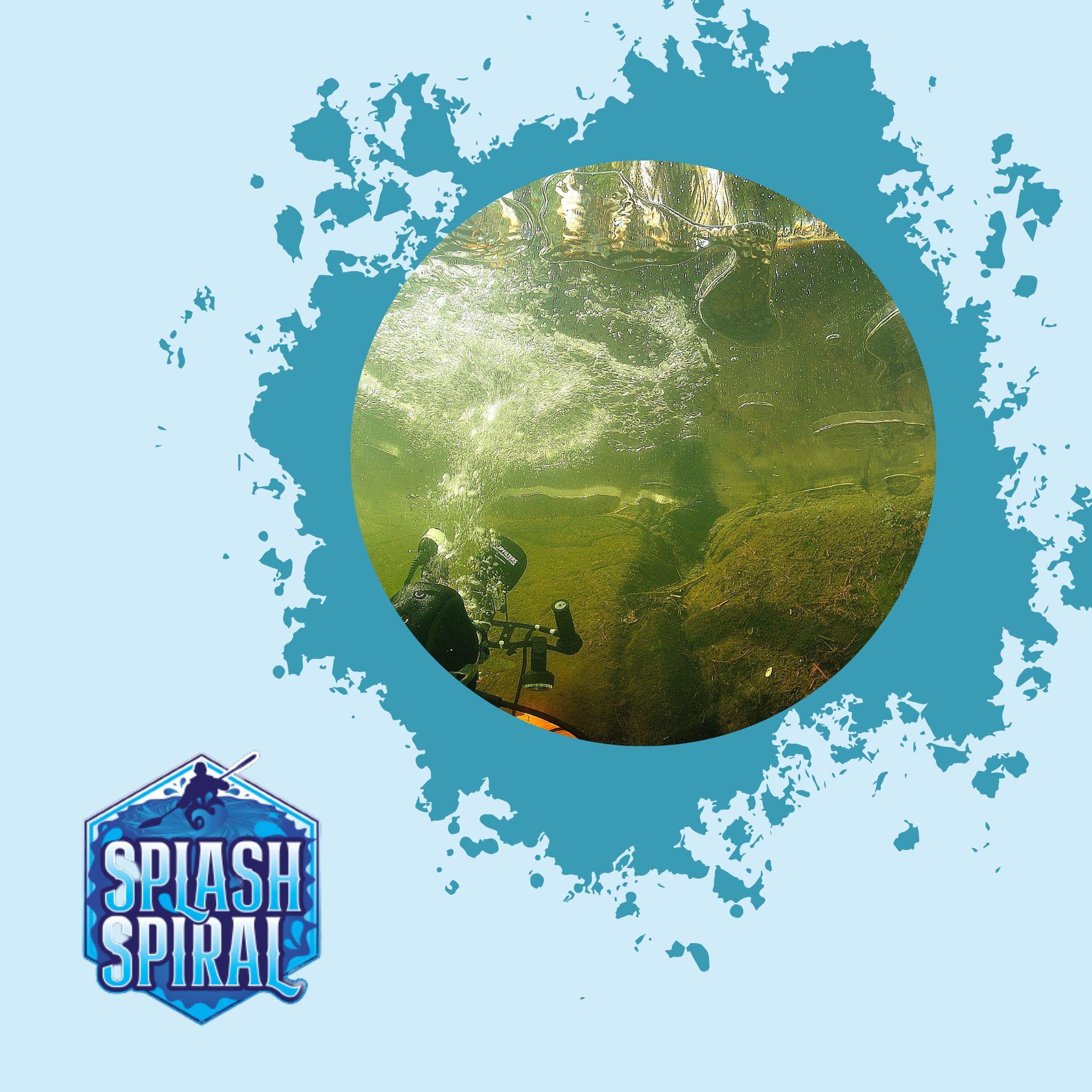
Have you ever heard of ice diving? It’s an extreme sport that involves exploring the icy depths beneath frozen lakes or the ocean. What makes ice diving unique is that it requires specialized equipment and training to experience the thrill of diving in icy waters.
It’s a challenging and exhilarating experience that should only be attempted by experienced divers. But why would anyone want to go ice diving, you may ask?
Well, for one thing, it offers a unique perspective on underwater life. The water is crystal clear, and you can see everything from fish swimming around to plants growing on the underside of the ice.
Plus, there’s something magical about being surrounded by frozen water while exploring a completely different world. However, there are also many dangers and challenges associated with ice diving.
Since divers have limited visibility due to low light conditions and ice cover creating less visibility in comparison with open water dives, they must rely heavily on their training and equipment. Without proper preparation or sufficient knowledge about safety precautions for such environments can lead to serious consequences like hypothermia or drowning.
What is Ice Diving?
Ice diving is an underwater adventure that takes place beneath frozen lakes or oceans covered by sheets of thick ice. When people think of scuba diving they generally imagine clear blue waters in tropical climates but this type of scuba diving involves cold freshwater systems or sub-zero temperatures at sea level below sheets of snow-covered surfaces known as pack-ice. This style of sub-surface exploration requires advanced skills like proper buoyancy control techniques to avoid getting stuck under ice while swimming through narrow channels between massive blocks which could collapse anytime due to fluctuating temperatures outside that affect their structural integrity causing them to become unstable.
The Unique Challenges Of Ice Diving
Ice diving poses many challenges that make it different from other types of scuba diving. The first challenge is the cold water temperature which can be below freezing point in many areas. This requires divers to wear specialized drysuits and thermal layers so they don’t lose body heat while underwater.
The second challenge is the low visibility caused by the surrounding landscape – a complete whiteout under ice with limited sunlight penetration. Divers must be familiar with navigating underwater using compass bearings or lines attached to guide ropes, since the limited visibility can cause disorientation and confusion resulting in panic if not handled correctly.
There are also hazards like weak ice, or underwater currents that pose a threat to divers. These safety concerns make it essential for divers to undergo extensive training and certification before diving beneath the frozen surface of icy waters.
Preparing for Ice Diving
Choosing the Right Gear for Cold Water Diving
Before embarking on an ice diving adventure, it’s important to equip yourself with the right gear to ensure your safety and comfort. This includes a dry suit that keeps you warm and dry throughout the dive, along with other necessary equipment such as undergarments, gloves, and boots. When choosing a dry suit, make sure it fits properly and is made of high-quality materials that are designed for cold water diving.
In addition to a dry suit, you’ll need other gear such as a regulator, mask, fins, buoyancy control device (BCD), dive computer, and weights. It’s important to invest in gear that is specifically designed for cold water diving to ensure it can withstand extreme temperatures and icy conditions.
Proper Training and Certification Requirements
Ice diving requires specialized training beyond what is typically required for warm water diving. Proper training helps divers learn how to safely navigate through icy waters while managing air supply in low visibility conditions. Certification requirements vary depending on location but many organizations offer ice diving certification courses.
It’s also important to have experience scuba diving before attempting an ice dive. This ensures that divers are comfortable underwater and know how to manage their equipment effectively.
Assessing Ice Thickness and Safety Precautions
Before heading out on an ice dive adventure it’s essential that divers assess the thickness of the ice they will be swimming under. This information can be obtained from local authorities or experienced ice divers who know what thicknesses are safe for underwater activities. It’s also important to have proper safety precautions in place including having a rope attached from shore or boat all the way down into the water so if there is trouble those above can pull up whomever may be struggling or injured beneath them
The Dive Experience
Embracing the Cold
The first thing you’ll notice when taking the plunge into icy waters is that you can feel the cold instantly. Despite wearing a drysuit, you’ll still be able to feel the chill of the water seeping through.
You’ll need to control your breathing and adjust your buoyancy by adding air to your suit to avoid sinking. It’s an intense feeling but once you get comfortable, it can be absolutely breathtaking.
An Underwater Wonderland
Once you’re settled in and have started swimming around, there’s no denying that ice diving is one of the most unique experiences any diver could have. The visibility can range from just a few feet to 100 feet or more depending on conditions, but no matter what, there are always fascinating things to see under the ice. You might come across pillars of light shining down from above or shimmering fish darting in and out between rocks.
You could come face-to-face with loons diving for their lunch or even spot crayfish crawling along on their quest for food. Every dive is different and every experience is one-of-a-kind.
A Wild Encounter
One of the most thrilling aspects of ice diving is coming across wildlife in their natural habitat. On one particular dive I did off the coast of British Columbia, I stumbled upon an octopus hiding beneath a rock ledge.
As it peered out at me with its huge eyes, I couldn’t help but stop in awe at this incredible creature. But it’s not just octopuses you might encounter – seals are also known to swim around divers playfully!
It’s important to remember that these are wild animals and while they may seem friendly, they should be given plenty of space so as not to upset them or cause harm. Diving beneath icy waters truly is a once-in-a-lifetime experience.
From the chill of the water to the unique sights and sounds beneath the surface to wildlife encounters, every moment is unforgettable. It’s an experience that will challenge you physically and mentally, but one that will leave you with memories that last a lifetime.
Safety Considerations
Managing Air Supply in Low Visibility Conditions
One of the biggest dangers of ice diving is the limited visibility underwater. As you descend beneath the thick layer of ice, it can be difficult to see anything more than a few meters in front of you.
This can make managing your air supply even more challenging than usual, as you can’t simply follow a trail of bubbles to the surface if you start to run low. To manage your air supply effectively during an ice dive, it’s important to have a clear understanding of how much air you have left and how much time that will give you at your current depth.
This requires careful planning and monitoring throughout the dive, as well as a good working knowledge of decompression theory. Some divers choose to use rebreathers for their ice dives, as these allow for longer bottom times and can help conserve gas.
Dealing with Equipment Malfunctions or Emergencies
When diving beneath the ice, there is no room for error or equipment malfunctions. Even minor problems like a frozen regulator or leaky drysuit can quickly turn into major emergencies if not handled properly.
To minimize the risk of equipment failure during an ice dive, it’s important to invest in high-quality gear that has been specifically designed for cold-water diving. You should also familiarize yourself thoroughly with every piece of equipment before heading out on your dive.
In case of an emergency situation such as a failed regulator or entanglement by fishing lines under the water, having contingency plans on how to mitigate this situation will be useful. Having practiced drills before any dives involving more than one individual will be essential so that each person knows exactly what they need to do in case things go wrong.
The Importance of Having a Dive Buddy
Ice diving should never be done alone – always have at least one dive buddy with you. This is especially important in case of emergencies or equipment malfunctions, as your dive buddy can be a crucial lifeline when things go wrong.
In addition to being a safety precaution, having a dive buddy also adds to the enjoyment of the experience. Sharing the thrill and beauty of ice diving with someone else is an unforgettable experience that you’ll both treasure for years to come.
Just make sure that you and your dive buddy are both properly trained and certified before heading out on any ice dives together. Overall, while ice diving can be an incredibly rewarding and exhilarating experience, it’s not something to be taken lightly.
Always prioritize safety above all else, make smart decisions about gear and training, and never hesitate to call off a dive if conditions are less than ideal. With careful planning, preparation, and attention to detail, however, ice diving can be one of the most unforgettable experiences in any diver’s life.
Historical Significance of Ice Diving
The Origin of Ice Diving in Scandinavia
Ice diving has a rich history that extends back to Scandinavia, where it originated as a means of transportation and fishing. The winter months often meant that rivers and lakes were frozen solid, preventing boats from venturing out into the water.
However, people still needed to fish, which led to the development of ice diving. Divers would cut holes in the ice and descend beneath the surface to catch fish.
Over time, ice diving evolved beyond being simply a means of survival. It became a sport enjoyed by many around the world today.
In fact, many places now host specialized expeditions for recreational ice divers looking to explore frozen waterways. Some even offer specialty courses and safety training for those interested in experiencing this unique type of diving.
The Evolution of Ice Diving over Time
The practice of ice diving has changed significantly over time as technology and safety measures have advanced. Early techniques involved using axes or chainsaws to cut large holes in the ice before entering into frigid waters with limited equipment. Nowadays, advances in dive equipment allow for safer exploration beneath the icy surface.
Drysuits and heated undergarments help keep divers warm while underwater propulsion devices make it easier to navigate through low visibility conditions. Furthermore, new techniques like tethered dives provide additional safety measures by allowing divers on shore to monitor progress and communicate with those underwater via radio communication gear.
Despite these improvements, ice diving remains an inherently risky activity that requires extensive training and preparation before attempting. Nonetheless, it is still an exciting pastime enjoyed by many who love the thrill of exploring new frontiers beneath frozen waters.
Conclusion
Recap of key takeaways from this article
Throughout this article, we have explored the world of ice diving, a unique and thrilling form of cold water diving. We have discussed the preparations necessary for such an adventure, including choosing the right gear and receiving proper training and certification. We also looked at the safety considerations involved in ice diving, such as managing air supply in low visibility conditions and dealing with equipment malfunctions or emergencies.
We dove into what it’s like to experience a dive beneath the frozen surface, including the unique sights and sounds to be found below. We even touched on the historical significance of ice diving, tracing its origins in Scandinavia and how it has evolved over time.
Final thoughts on the thrill and beauty of ice diving
Despite its inherent dangers, ice diving offers a uniquely beautiful underwater experience that cannot be found anywhere else. The thrill of descending into icy waters is not something that can be easily replicated by any other activity. The feeling of weightlessly floating beneath a blanket of snow-covered ice with nothing but your thoughts is an incredibly serene experience that leaves you feeling both humbled by nature’s power and empowered by your own bravery to face it head-on.
If you’re looking for a true adventure that will leave you with memories to last a lifetime, consider taking up the challenge of ice diving. It may be one of the most breathtaking (literally) things you ever do!







